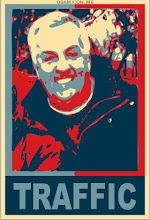HAPPY NEW YEAR TO ONE AND ALL!
MAY THE NEXT YEAR BRING A PROSPEROUS AND PROFITABLE RESURGENCE IN INFRASTRUCTURE INNITIATIVES!

This is the blog for Steve Manhart, Midwestern District Director on the International Board of Direction for the Institute of Transportation Engineers (ITE). Please check here often for ITE and Midwestern District (MWITE) news, comments and feedback.

From Minnesota to Florida, drivers grumble that roundabouts are confusing and dangerous.
But the Insurance Institute of Highway Safety says that modern roundabouts — which have proliferated in this country in recent years — are not only far safer than regular intersections, they are also more fuel efficient. Drivers use about 30 percent less gas when using a roundabout compared with a traffic signal, according to the Institute, because they don’t necessarily have to stop and idle.
Modern roundabouts differ from older traffic circles — like Dupont Circle in Washington or Grand Army Plaza in New York — in a few ways. The new ones are smaller, and also have sharper angles, so that drivers are forced to enter more slowly and are supposed to yield rather than merge. This, at least in theory, makes them safer, though drivers do not always know the rules.

Minneapolis |